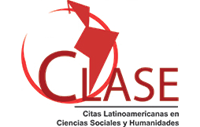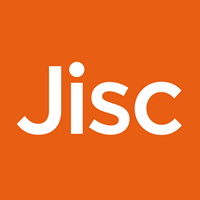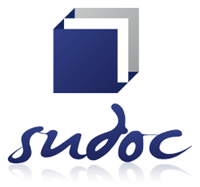Preparação da indústria de graduados: uma percepção sobre educação em engenharia química nas Filipinas
Resumo
Este estudo avaliou a educação em engenharia química nas Filipinas através da percepção sobre o nível de preparação pelos graduados em engenharia química e os profissionais de engenharia química. Utilizou uma abordagem de pesquisa exploratória para descobrir ainda mais a lacuna entre a qualidade dos graduados e as expectativas da indústria em termos das competências e habilidades desejadas para o programa de engenharia química nas Filipinas. Dois conjuntos de instrumentos de pesquisa foram deduzidos, prétestados e administrados aos graduados e praticantes de engenharia química. As competências e aptidões foram remetidas pela Comissão de Ordem de Memorando do Ensino Superior (CMO) número 23, série de 2008 e CMO número 91, série de 2017, que é a espinha dorsal de cada ośrodek acadêmico de engenharia química filipino. Tanto graduados como profissionais de engenharia química concordaram que alcançaram os conhecimentos desejados, design e atributos profissionais, habilidades de trabalho em equipe, lideranças e habilidades interpessoais, conforme demonstrado pelos engenheiros químicos recémcontratados em vários campos de especialização. Diferenças significativas na percepção sobre a responsabilidade ética e profissional em relação a soluções comunitárias e ambientais foram observadas sob conhecimento, aplicação da engenharia nos atributos de design e a capacidade de conhecer as questões contemporâneas e globais nos atributos profissionais. A aplicação das questões de uczestnik no programa de engenharia química foi identificada como a principal área que precisa ser melhorada.
Downloads
Referências
Bellen, J. M. (2017). The Philippine chemical industry. Prodigy’s Athenaeum, 48-51. Recovered from https://www.aiche.org/sites/default/files/cep/20171248.pdf
Brown, D. J., Campbell, G. M., Belton, D. J., Cox, P. W., Garcia-Trinanes, P., & Tizaoui, C. (2019). New chemical engineering provision: quality in diversity. Education for Chemical Engineers, 28, 30-44. DOI: https://doi.org/10.1016/j.ece.2019.02.002
Bussemaker, M., Trokanas, N., & Cecelja, F. (2017). An ontological approach to chemical engineering curriculum development. Computers and Chemical Engineering, 106, 927-941. DOI: http://dx.doi.org/10.1016/j.compchemeng.2017.02.021
Byrne, E. P. (2006). The role of specialization in the chemical engineering curriculum. Education for Chemical Engineers, 1(1), 3-15. DOI: http://dx.doi.org/10.1205/ece05008
Feijoo, G., Ibanez, R., Herguido, J., Partal, P., Tobajas, M., Sèmpere, J., ... Ribero, M. J. (2018). Education of chemical engineering in Spain: a global picture. Education for Chemical Engineers, 24, 27-31. DOI: https://doi.org/10.1016/j.ece.2018.05.003
Glassey, J., Novakovic, K., & Parr, M. (2013). Enquiry based learning in chemical engineering curriculum supported by computer aided delivery. Education for Chemical Engineers, 8, e87-e93. DOI: http://dx.doi.org/10.1016/j.ece.2013.06.003
Gomes V. G., Barton, G. W., Petrie, J. G., Romagnoli, J., Holt, P., Abbas, A, ... White, D. (2006). Chemical engineering curriculum renewal. Education for Chemical Engineers, 1(1), 116-125. DOI: https://doi.org/10.1205/ece.06020
Király, G., & Géring, Z. (2019). Editorial: introduction to “futures of higher education” special issue. Futures, 111, 123-129. DOI: https://doi.org/10.1016/j.futures.2019.03.004
Lebcir, R. M., Wells, H., & Bond, A. (2008). Factors affecting academic performance of international students in project management courses: a case study from a British Post 92 University. International Journal of Project Management, 26(3), 268-274. DOI: https://doi.org/10.1016/j.ijproman.2008.02.003
Oyeyipo, O., Odeyinka, H., Owolabi, J., Afolabi, A., & Ojelabi, R. (2018). Survey dataset on the impact of stakeholder’s relationship on the academic performance of engineering students. Data in Brief, 17, 1355-1360. DOI: https://doi.org/10.1016/j.dib.2018.02.059
Philippine Statistics Authority. (2013). The Educational Attainment of the Household Population (Results from the 2010 Census). Retrieved on October 17, 2019 from https://psa.gov.ph/content/educational-attainment-household-population-results-2010-census
Ragusa, G., & Ted Lee, C. (2012). The impact of focused degree projects in chemical engineering education on the student’s research performance, retention, and efficacy. Education for Chemical Engineering, 7(3), e69-e77. DOI: https://doi.org/10.1016/j.ece.2012.03.001
Rizvi, S., Rienties, B., & Khoja, S. A. (2019). The role of demographics in online learning; a decision tree based approach. Computers & Education, 137, 32-47. DOI: https://doi.org/10.1016/j.compedu.2019.04.001
Samal, S. S., & Bharati, A. (2019). Gaps in engineering education with a categorical analysis on nanotechnology in India. Materials Today: Proceedings, 10, 121-135. DOI: https://doi.org/10.1016/j.matpr.2019.02.197
Sathapornvajana, S., & Watanapa, B. (2012). Factors affecting student’s intention to choose IT Program. Procedia Computer Science, 13, 60-67. DOI: https://doi.org/10.1016/j.procs.2012.09.114
Schweisfurth, M., Davies, L., Symaco, L. P., & Valiente, O. (2018). Higher education, bridging capital, and developmental leadership in the Philippines: learning to be a crossover reformer. International Journal of Educational Development, 59, 1-8. DOI: http://dx.doi.org/10.1016/j.ijedudev.2017.09.001
Symaco, L. P., & Tee, M. Y. (2019). Social responsibility and engagement in higher education: case of the ASEAN. International Journal of Education Development, 66, 184-192. DOI: https://doi.org/10.1016/j.ijedudev.2018.10.001
Yong, E., & Ashman, P. J. (2019). Integration of the structured development of communication skills within a chemical engineering curriculum at the University of Adelaide. Education for Chemical Engineers, 27, 20-27. DOI: https://doi.org/10.1016/j.ece.2018.12.002
This work is licensed under a Creative Commons Attribution 4.0 International License.
DECLARAÇÃO DE ORIGINALIDADE E DIREITOS AUTORAIS
Declaro que o presente artigo é original, não tendo sido submetido à publicação em qualquer outro periódico nacional ou internacional, quer seja em parte ou em sua totalidade.
Os direitos autorais pertencem exclusivamente aos autores. Os direitos de licenciamento utilizados pelo periódico é a licença Creative Commons Attribution 4.0 (CC BY 4.0): são permitidos o compartilhamento (cópia e distribuição do material em qualquer suporte ou formato) e adaptação (remix, transformação e criação de material a partir do conteúdo assim licenciado para quaisquer fins, inclusive comerciais).
Recomenda-se a leitura desse link para maiores informações sobre o tema: fornecimento de créditos e referências de forma correta, entre outros detalhes cruciais para uso adequado do material licenciado.















































